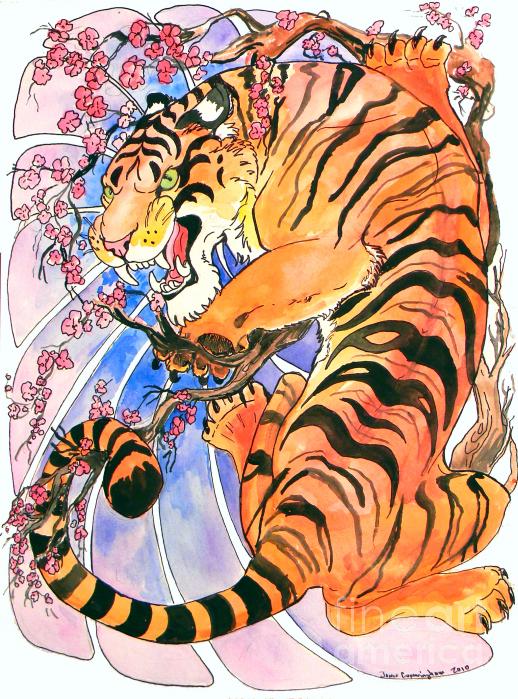Interested in tiger paintings from Japan? Be informed about the various mediums in which the Japanese have produced Japanese tiger art.
The tiger is one of those animals that has found itself commonly featured in Japanese art. For the Japanese the white tiger holds a special place in their religion and is considered to be one of their deities. Ironically the species is nowhere to be found in Japan.
Back in the Edo period the region of Nagasaki was known to have been home to some tigers. Tigers had also become a sideshow attraction during the time period known as the Bunkyu era which lasted from 1861 to 1863. Sighting a tiger was however next to impossible in the Kyoto-Osaka area during these periods.
Nonetheless we find the tiger being featured in a wide collection of Japanese arts. How did the Japanese artists manage to work with the tiger even though they hardly had access to one? Well, artists like Ganku actually got himself the head of a tiger which he placed in his studio in order to work with it. Others like Maruyama Okyo sketched tigers from life as he acquired a tiger’s pelt. Most of the Japanese artists however copied the tiger off of traditional Chinese paintings.
Chinese Origins
The Japanese artists have been humble enough to accept that they had no other choice but to copy the animal from Chinese paintings because they did not have the opportunity to make live observations. The copying of the Japanese artists was however for the purpose of getting the feel of the animal and not creating an exact replica.
In some cases the Japanese renditions of the tiger actually surpassed the art work that the Chinese had created by observing real life tigers. The Japanese artists were able to capture the spots of the tiger in movement as well as the fullness of its coat much better than their Chinese counterparts.
Japanese artists had enough exposure to tiger skins. It was however extremely difficult for them to round this skin up in to the animal by means of imagination. This is one of the reasons why you would find slightly distorted renditions of the tiger. Particularly noticeable were the larger than normal eyes popping out of shrunken sockets, incredibly small ears, and the flat nose and huge paws.
Another interesting factor about Japanese tiger art was regarding the consistent lines over the entire coat of the tiger. These characteristics are to be found in the majority of Japanese tiger art. With a complete absence of any form of visible example the Japanese artists had done well to capture the essence of the animal although in a distorted form.
The image of the tiger is believed to have innate symbolism. Known for its courage, sensitivity, stubbornness and hot temper the tiger has played a prominent part in the art of the country. The traditional Japanese rendition of the tiger is widely used in graphic arts even till today.





